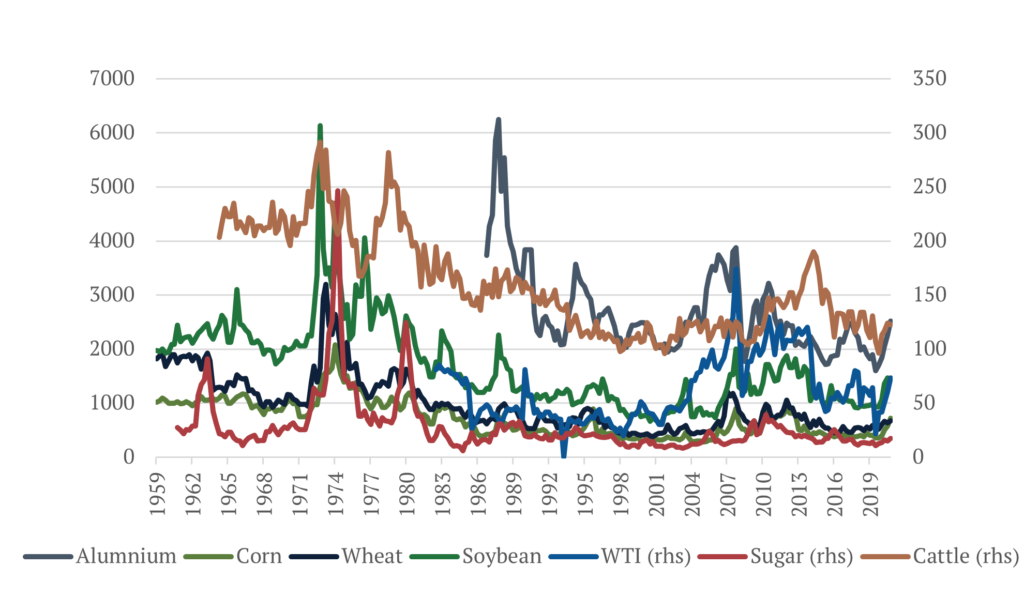On February 1st, at Credit Suisse’s 2022 Latin America Investment Conference, Enio Shinohara moderated a conversation with Rogerio Xavier from SPX and Luis Stuhlberger from Fundo Verde. In it, Luis made a very interesting remark on the US interest rates curve, which loosely translates from Portuguese to “so far in the United States, the increase in interest rates being priced by the market has simply anticipated a series of hikes, but has not changed the terminal interest rate. In other words, the first probability that appeared during the pandemic was for the first hike to happen in 2023 or 2024. In the past year, these expectations were repeatedly pulled forward. It started with one hike in 2022, and now we are talking about 5 to 6 hikes of 25 bps in 2022. But the terminal interest rate has not changed; the terminal interest rate is around 1.80%. In my opinion, and I agree with Rogerio, this will not be enough.” (I highly recommend watching the entire conversation, especially if you have any interest in Brazil: English Link, Portuguese Link).
Central banks around the world have one big problem today – inflation. This issue is even more apparent in developed markets that are mostly seen as behind the curve. From traditional macroeconomic models, we know that central banks can restrict the supply of money to ease pricing pressures; however, there are a few ways that this can be achieved. The two most common approaches are hiking short-term interest rates and pressuring long-term rates higher, both with meaningful, but different, redistribution effects. Historically, hiking short-term rates has been the method of choice at the Fed. That was also communicated at the last FOMC meeting and markets are pricing for it. Nevertheless, the situation is fluid and central banks, especially the Fed, may conclude that influencing long-term rates might be a better tool for the current environment and their updated mandate that now includes improving inequality.
The traditional way of relying on short-term interest rate hikes to lower inflation has the effect of controlling prices of goods by curbing demand through a flat or inverted interest rates curve, thereby causing a recession that generates the necessary slack to keep prices from rising. This method acts through raising unemployment and having little effect on asset prices. As Luis mentioned, hikes have only been anticipated with minimal impact on long-term rates, which in turn had little effect on mortgage rates and equities. In other words, this method exacerbates inequality. This is what the market is pricing today, with forwards implying an inverted curve in the US and Europe one year from now.
We believe that once this becomes apparent, the Fed will move into a more aggressive posture regarding balance-sheet reduction and steepening of the yield curve. Central banks have tools to control term premia, and by doing so can influence mortgage rates and asset prices. By increasing mortgage rates, they can keep home prices in check and consequently OER, with the added bonus of improving affordability. By decreasing asset prices, they might be able to bring early retirees back into the labor force (due to the decreasing values of their nest eggs), slowing, but not reversing wage growth, and consequently keeping services inflation tamed. Since we are not going through a balance-sheet crisis, central banks can engineer a soft landing without killing growth by pressuring long-term rates higher. This method would potentially have a positive impact on inequality. We hold a strong view that the probability of this scenario is higher than what the market is pricing.


